- Home
- China Miéville
Three Moments of an Explosion Page 16
Three Moments of an Explosion Read online
Page 16
Kikeriki, she hears, kikeriki, whispered in a voice she knows.
SYLLABUS
HUMANITY, INTROSPECTION AND DEBRIS
This is a three-week higher-level course. See separate sheet for reading list. Sophisticated engagement with the material is expected. Physical presence at classes is mandatory: Echofigures may not attend in your stead.
Your final mark will be based on a single long-form essay agreed with your AI; OR a three-hour, three-question exam; OR a performative trance.
Week 1: Tip Life
The experiments of Ngosi and Backhouse have proved that, contrary to what had been assumed to be an injunction of ethical chronotourism, history is littered with the trash left by time-travelers. Since that realization, various common items of everyday life have been proven to be such rejectamenta.
We will examine the nature of these proofs, particularly given our timeline’s facility in smoothing over the scars of these discards; the political ramifications of living in a scree of future rubbish; the likelihood that some such garbage is from tourists from the past, rather than from the not-yet; and the importance, if any, of the fact that a disproportionate number of items of this repurposed rubbish are now quotidian features of modern streets.
Topics for discussion may include the following:
• Benches: what will they be originally?
• Why were bollards for so long held to be refugees from a future war? Why did this cease to be mainstream opinion?
• Can trees be recuperated?
You will be expected to show all proofs.
Week 2: The Misprision of Modern Relief
The arrival of insect ships to London skies in 1848 initially led to brief interplanetary war, until the 1849 Treaty of Sutton put an end to the conflict, after which relations between the British and visiting authorities thawed rapidly. We will review the history of this famous “Misunderstanding” and its aftermath.
Our focus will be on the period following the inauguration of the first insect bishop in the Church of England (Bishop Insect of Manchester, in 1853) up to and including the present day, and the rapid spread of insects into their current leading positions in humanitarian and ethical organizations. We will examine the life and works of the famous “Insect with the Lamp” among the wounded of Crimea; the strenuous efforts at slum clearance carried out by Insect and Insect in Birmingham during the 1890s; and the rise of the modern telethon and charity single, a sector still insect-dominated.
We will end with a comparison of Insect’s famous 1962 Stockholm declaration that “We will not rest until global suffering has been eradicated” with Eleanor Marx’s excoriating 1890 pamphlet “The Chitin of Charity.”
You will be expected to take sides.
Week 3: Cost-Benefit
In what was called “the last and most awesome frontier,” sickness in general and an increasing number of particular conditions were recently privatized in the UK. Can this be deemed a success? And if so, for whom, how and why?
We will perform a critical reading of the government’s “You Be Illin’!” advertising campaign to publicize the sale of shares. We will ask what correlation, if any, can be drawn between the precipitous rise in the price of shares in plague, the spread of the “Cures are for Pussies” internet meme, and Diesel’s “You-Go Bubo” range of jewelry.
PLEASE NOTE: If you are, in the opinion of your AI, a member of the “Pus-Tool” youth subculture, you may not write on this topic. The AI’s judgment on this issue is final.
DREADED OUTCOME
In the morning I had an empty-chair session with Charles B, so he could talk to his absent father. Generally I try to schedule those for the end of the day—they can be hard, emotionally, for me as well as for the patient—but this time there was no other option.
It was particularly tough because I was tired. I’d worked late the previous night. I’ve been doing that a lot. I’d ended up heading home after midnight, walking a long way past the lights of bars and down dark residential streets in the cold rain. I threw off my jacket, my gloves, and my jeans the moment I came through my apartment door, and showered in very hot water—my showerhead defies New York City’s low-flow rules—before falling into bed. But I was too wired to sleep. I got up again almost immediately. I did a few chin-ups at the bar I installed in my kitchen and, surrendering, I made myself a coffee. I’ve never been a great sleeper, particularly when I’m really focused on a project.
I’d broken a nail on my right index finger. The nude-colored polish was noticeably chipped. I’ll get a manicure as soon as I can. It’s unprofessional to look ragged. In the meantime I filed it down, reapplied varnish, watched the dawn.
The edge was still a little uneven. Sitting in my clinic the next morning I dug it into the ball of my thumb to help myself concentrate. I facilitated Charles’s questions to and answers from his father.
After lunch was Sara W. It was only her second session but things were becoming clear. She’s in her thirties, buckling under a wave of anxiety. She’s not ready to say so yet, but she wants and needs to leave her husband. Not that he’s the cause of her difficulties: those she’s carried from her parents.
After her was Brian G, a gambling addict. Then a short catch-up with Ella P, whom I hadn’t seen for weeks, and who was doing well. I’ll keep her file and I hope she’ll check in from time to time—I take a continuing interest in my patients—but I don’t think she needs me any more.
The last session of the afternoon was with Annalise.
My name is Dana Sackhoff. I’m thirty-eight, and I’m coming up to my ten-year anniversary in this job. I’ve had my own practice all that time, here in Brooklyn.
My clinic’s in Fort Greene. It’s small, quiet and light, with an entrance direct to the practice, which patients prefer. I’ve worked to make the consulting room the right combination of homely but abstract—full of pleasant, forgettable art, warm colors, that kind of thing. There are copies of Harper’s and InStyle in the waiting room, and some black-and-white photos of Coney Island roller coasters. There’s a light-up pigeon I bought at Brooklyn Flea: I want patients to know that humor is allowed here.
I take just as much care over how I present myself: hip but not hipster, square-rimmed black glasses which I swear I was wearing before they became uniform, hair up, loosely. Not too touchy-feely, not too severe, not sexy, not sisterly. If H & M did a capsule collection like that, they’d clean up in the therapist market. In New York that’s decent market share.
I have two small tattoos, which my patients never see.
I was premed at Yale, but I ended up doing my Masters and PhD in psych theory. I was going to be an academic, even published a couple of papers, but when, out of curiosity, I took a course in therapeutic practice I knew I’d found my métier. I specialize in addiction and compulsion, trauma recovery and attachment disorder.
For years I’ve been turning my thesis into a book, though Elliott, my therapist, thinks that I’m too busy not-writing it to write it.
“I don’t just mean you aren’t writing it,” he said to me recently. “Not-writing’s an activity that takes up a lot of your energy and time. At least as much as writing would. Do you think you’re invested in not-writing?”
Of course I’m sure there’s truth there, but I don’t think it’s as simple as that. I’m invested, yes, but in other things, and anyway I’ve been getting increasingly energized about the project again recently, as even he allows. I’m collecting and collating case studies. I’ve been enjoying thinking of pseudonyms for the patients, along the lines of Freud’s “Wolf Man.” In my notes, Annalise Sobel is AS, but in my head she’s Anguished Scholar.
It was my eighth session with Annalise. If I don’t have a pretty clear idea of what’s going on by session five, I’m probably not the right fit for a patient. With Annalise, I was clear.
She was not hyper or agitated as I’ve sometimes seen her. She was flat. I’d ask questions and she’d answer briefly, dutifully, wi
thout engagement. I was concerned but not surprised: it had been obvious enough that she was melting down that I’d recently suggested she come in more than once a week. “We can work out the financial stuff later,” I’d said, hoping she’d take the hint and let me do an extra session or two without charge.
Annalise is forty-four, single, with many friends, well-liked, sociable, and cripplingly, clandestinely anxious. She’s a linguist and a translator (I see her byline sometimes). Both her parents died a few years ago, within twelve months of each other, leaving a lot of stuff not dealt with. It was her mother with whom Annalise had been originally traumatically imbricated—gender notwithstanding, and without implying physical abuse, she’d been the “little husband.” She had for years been reenacting that model in her romantic and her overinvested social relationships.
She’s been working hard. Annalise is what Afnik calls an “inverted narcissist,” though I prefer the term “occult narcissist,” and I differ from those who see the condition as synonymous with covert narcissism: related, maybe, but not the same. She’s a compulsive caregiver, driven, full of deep need for, but discombobulated by, attention or praise. She has the fearful, resentful messianism of the child who’s been trained into a duty of caretaking she can’t fulfill. Annalise’s fantasies involve disappearance. She catastrophises all the time, and makes things worse than they need to be by doing so. She fretfully attempts, and fails, to negotiate dreaded outcomes.
A lot of OCD dreaded outcomes are highly specific: if I don’t wash my hands five times, my children will die, and so on. Annalise’s are powerful, but nebulous. She’s just full of dread.
She knows most of this, to some extent, and she knows she’s depressed, but if knowing the problem was the solution, most patients wouldn’t need us at all. I’ve been impressed with how she’s tried to step up, her drive to change. I’m committed to helping her break her dynamics.
“I don’t even really feel trapped,” she said. “I hope it doesn’t sound melodramatic or self-pitying. It’s not that I don’t see any way out, exactly—it’s that I feel like there’s no point looking for one.”
“Where are you feeling this in your body?” I said. I could see how constricted her chest was. “I want you to breathe deeply for me.”
“I’ve been trying some of the techniques we discussed,” she said. “With Sandra.”
“And?”
“And I think I’m doing OK for a while, but then …” She shook her head and her voice petered out.
Sandra was, or had been, a friend. She’d been part Annalise’s circle for a while, was a little younger, a financial analyst, driven and ambitious. She was also a veteran narcissist.
Over some months, she and Annalise had got closer, until Annalise had, with hard-won instincts, started to become aware that the relationship was provoking mostly unease and guilt in her. That the dynamic was dysfunctional. She’d been trying to pull back. Sandra, sensing this, had, in turn, ramped up the intensity, and the effective shame and guilt transference that characterized her behavior.
Sandra made sure Annalise—and others—knew she considered Annalise to be letting her down, or worse.
Annalise had done her best to negotiate this terrain, but she was floundering, and struggling with her own tendencies to shame. She couldn’t put the situation out of her mind. Her anxiety, and what might or might not be paranoia, was growing to disabling levels, keeping up with the vituperation. Annalise couldn’t shake her sense that gossip was growing against her, that she was picking up whispers among her friends to the effect that she had been manipulative—even abusive—to Sandra. She’d even found an anonymous post on a forum linked to her university, that, while it didn’t use names, she was convinced was about her, accusing her of cruelty, treachery, and so on.
I pointed out that even if she was right about the existence, target, and source of these attacks (I suspected she was), few would take such claims at face value, that their traction would be negligible, that they would rebound worse on anyone propagating them than on Annalise. But even if she agreed with that reading, Annalise was tipping into a crippling—suicidal—anxiety.
She was facing one of the key issues of psychodynamics. Our routines of behavior and affect of course operate through our cognition and emotion—but they also externalize. This is a limitation of therapy that focuses too narrowly and exclusively—you could say hermetically—on the patient’s psyche. If patients have been trained into agonizing at being inappropriately responsible for others, say, they might be straining to break that dynamic but until they do, until they succeed, they’ll also compulsively seek out resentful narcissists. Who will hunt them, too, as an externalization of their issues. They’ll enter a dance, a spiral that feeds each other’s self-destruction.
The issues are not, in other words, all in a person’s head.
“You remember the diagram I showed you?” I said. “This is ‘love-addiction.’ You’re the object, right now. Of course you should be as responsible as you can for your behavior—considerate and mindful, and so on, taking responsibility when you mess up—but you can’t be responsible for someone else’s happiness. What she’s doing, in the jargon, we’d call ‘stowing away.’
“She’s afraid to take responsibility for her own actions and emotions. She resents her own agency. So she constructs situations in which she can tell herself she has none.
“She’s inserted herself into your dynamics because they’re a good fit for hers. That way she gets to be furious with you about where she’s going. She’s a stowaway. She got into your psyche, then blames you for the route.”
I don’t like labels, but it’s fair to say that my theory and practice broadly come under the small umbrella of what’s called TVT: traumatic vector therapy. It’s unabashedly pragmatic and eclectic. We draw on post-induction therapy, Gestalt, psychoanalysis, Adler (negatively), Kohut, Klein, whatever works. TVT once got described as “a homeopathy of Laing,” on the grounds that we take the idea from anti-psychiatry that dysfunction is a rational response to a pathological world, then dilute the insight until it’s all gone—then try to use it. Which, to be fair, is witty.
“She’s—are you saying it’s because of her that I feel—” Annalise said.
“It’s never that simple,” I said. “She’s not the cause. What she is is a vector.”
“What do I do?” Annalise’s voice didn’t break. We talked strategies again. I was careful to tell her I knew she was doing everything she reasonably could.
I had an appointment with Elliott, but I was agitated, thinking about Annalise, and feeling that I really needed to do some work that evening. I called him to postpone: I was relieved it went to voice mail. I spent an hour and a half at the gym, doing core, upper body, a hard treadmill session. I was near my PB over six miles.
It’s not obligatory for a therapist to be in therapy, not in New York State, but a lot of us are. Particularly among TVT practitioners, it’s considered a sine qua non. We take on a lot of our patients’ stress, and we need to talk to someone who understands.
At home I showered and listened to my messages. Two friends, suggesting a drink, a call from David.
He’s an architect. We met through a mutual acquaintance. We’ve been seeing each other, on and off, for a year. He’s keen to move in—my apartment is nicer than his. I’ve told him I need some time.
By the time I’d eaten it was past seven. I considered an early night, but I knew I wouldn’t sleep. I needed to work. I texted Annalise to check in on her. She replied that she was staying with her sister, which relieved me.
I sat on my sofa, pulled a couple of books off my shelves, and opened my laptop to do some research.
It was a little after 2 a.m. when I scaled the outside of a brownstone in Bushwick. I climbed the first two floors by the downpipe, brachiating silently up the rusting gutter to the fire escape.
A few lights were on in the houses around me but no one was visible. I was all in black with my mask down a
nyway, and I know how to stay still. I straightened the pack on my back, balanced on the stair railings and jumped up to get a grip on the building rim. I do a lot of finger chin-ups: from there it was pretty simple to get onto the roof.
I ran fast and silently the length of it and made the alley jump. I’d done recon: this was the best way to get where I was going. I took cover behind the wall at the roof’s edge, opened my hockey bag and got my equipment ready.
I use a 22” Pro-Series 2000 PHL with a Leupold VX-3 scope and a three-round magazine. My colleagues can keep their HK417s and M98s: we’re not in downtown Basra. And sure, the 2000 has a kick. But we work in modern cities, not battlefield conditions. The PHL has a ½ MOA, and it comes in at less than 6.5 pounds, which for situations like this one, involving climbing and running, is worth a lot.
I’d considered a VSS Vintorez, for the silencer, but honestly, if you take one shot, most people roll over in their sleep and think an engine’s backfired. If you have to take more than one shot, maybe you shouldn’t be a therapist.
There are reports of a new model out of Iran, the Siyavash, supposedly ultra-lightweight. I’m officially interested.
The light I was looking for, on the first floor of the building opposite, was on. Judging from time stamps on the messages Annalise showed me, Sandra often wrote in the small hours. I braced the barrel on its stand and took a crouching position, sighted through the glass.
A small tidy living room lit by a TV I couldn’t see. Many books, a table with the remains of a meal on it. No people. I waited.
As therapists, the emotional welfare of our patients is our highest priority. Our job is to actualize mindfulness, maximize emotional welfare, help break compulsive and harmful dynamics, and to eradicate vectors of trauma.

 This Census-Taker
This Census-Taker Jack
Jack October: The Story of the Russian Revolution
October: The Story of the Russian Revolution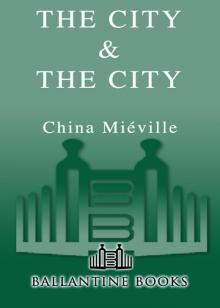 The City & the City
The City & the City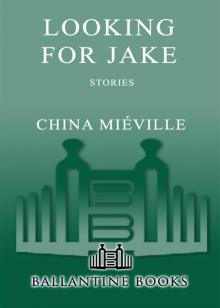 Looking for Jake: Stories
Looking for Jake: Stories Perdido Street Station
Perdido Street Station Un Lun Dun
Un Lun Dun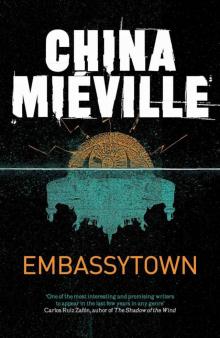 Embassytown
Embassytown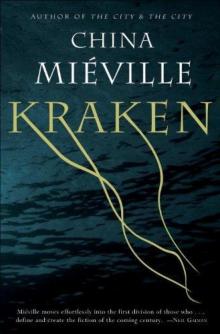 Kraken
Kraken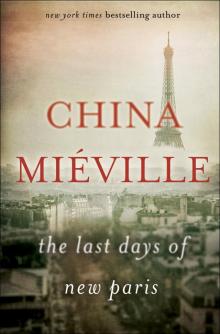 The Last Days of New Paris
The Last Days of New Paris Iron Council
Iron Council King Rat
King Rat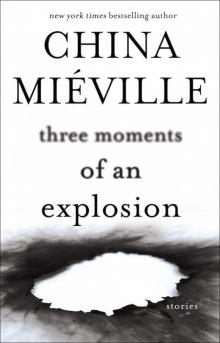 Three Moments of an Explosion
Three Moments of an Explosion London's Overthrow
London's Overthrow October
October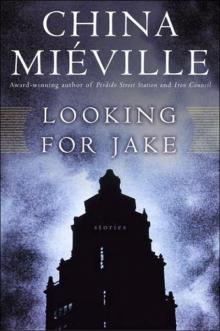 Jack (new crobuzon)
Jack (new crobuzon) Looking for Jake and Other Stories
Looking for Jake and Other Stories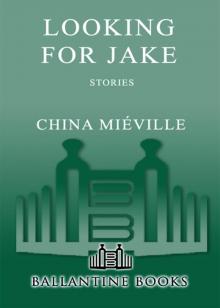 Looking for Jake
Looking for Jake